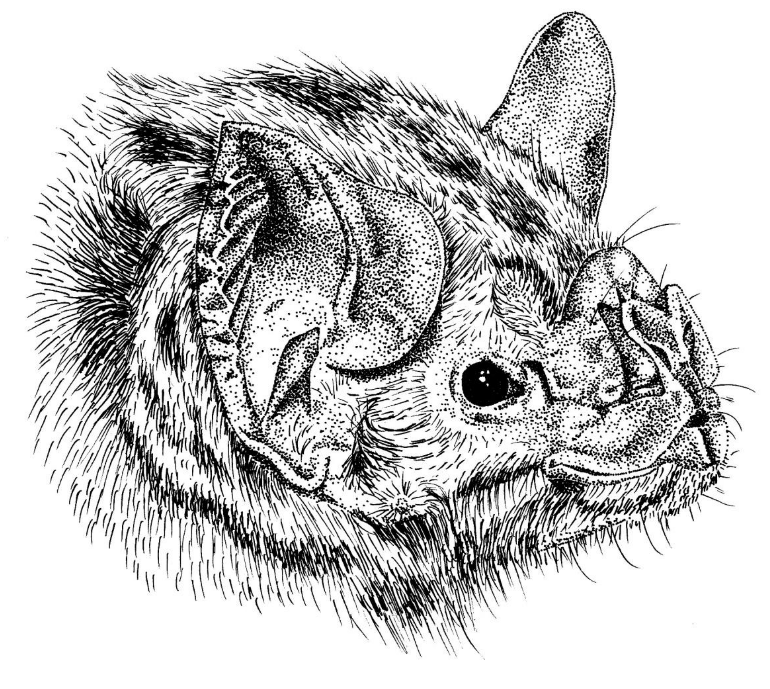Ahana A. Fernandez
We know the term “social distancing” all too well from our own lives. However, not only humans practice social distancing when they feel ill – it can also be observed in bats. This field study by Ripperger et al. confirms what was previously shown in captive bats: sick vampire bats spend less time in the vicinity of healthy conspecifics, which can slow down the spread of disease. The contact behavior of vampire bats in the field was tracked and monitored in high-resolution thanks to high-tech animal trackers.
The spread of a disease in a population can be strongly influenced by changes in social behavior – both positive and negative. The transmission rate of disease increases when parasites influence the behavior of their hosts – and decreases when sick and healthy individuals change their behavior because of the disease. An example of such a (positive) change in behavior is “social distancing”, a change in behavior that can be either “active” or “passive”. Active distancing means that sick individuals are avoided and/or isolate themselves from healthy individuals. The avoidance of contact with sick conspecifics has been observed in lobsters, mice and even tadpoles. Humans are also able to actively avoid social contacts with sick people and to consciously change their social network (e.g. with whom they meet). Passive distancing, on the other hand, is based on natural consequences of an illness: sick individuals are often lethargic and sleepy and therefore move much less – and consequently meet less with conspecifics. This passive reduction of social contacts is not based on cooperative behavior, but is the logical consequence of the symptoms of the disease.

In this study, passive “social distancing” was investigated in the common vampire bat, Desmodus rotundus. It is known from various studies that these gregarious animals are extremely social – the best-known example is the sharing of a blood meal with unrelated individuals. The distribution of D. rotundus ranges from Mexico to South America and the animals gather by hundreds in their day roosts (often in hollow trees) where they interact during the day. At night, the animals leave in the early morning hours for foraging. In this study, an international research team conducted an experiment on vampire bats in the wild to investigate the passive form of “social distancing” and the resulting consequences on social bonds between individuals.
31 females were captured from a hollow tree in Belize to simulate an infection in half of the animals. The individuals of the test group were injected with a substance consisting of lipopolysaccharides (LPS). LPS causes disease symptoms for six to twelve hours – obviously without harming the animals. The effect is absent after 48 hours at the latest. From studies in captivity, it is known that LPS causes animals to become lethargic, to groom less and also to decrease their social vocal communication (i.e. they produce fewer contact calls). The control group was injected with saline solution. Immediately afterwards, all animals were tagged with novel proximity sensors and released back into the wild. These proximity sensors are extremely lightweight (1.8g including battery and housing) and broadcast a signal every 2 seconds. This signal wakes every sensor within 5-10m from “sleep mode”. As long as the sensors remain within reception range, they track every 2 seconds which individuals are nearby and for how long. During three days, the social contacts of the 31 animals were documented. Based on this high-resolution data set, a dynamic social network was calculated, which revealed changes in social contacts between sick and healthy individuals.
The results of this study demonstrated that the behavior of sick vampire bats significantly changed their social networks. Animals with disease symptoms associated significantly less often with group members and spent less time with them. These effects became smaller with increasing time after the injection and disappeared completely after 48 h. Passive “social distancing” has thus also been shown in wild vampire bats and serves as an effective mechanism for limiting disease. However, sick animals have not consciously isolated themselves, but have automatically had less contact with healthy individuals as a consequence of their disease symptoms (lethargy, immobility). The reduced willingness to groom each other and the reduction of contact calls certainly also contributed to the fact that these sick animals had fewer social contacts.
Moreover, these data sets can be used to simulate different transmission scenarios of potential pathogens (e.g. varying meeting durations and varying distances between animals) and their consequences on the potential spread of a disease through a network. These theoretical simulations could be of great benefit in understanding the spread and prevention of disease. Hence, this study also shows very nicely that these high-tech proximity sensors create new possibilities for data analysis. This study illustrates two things. Firstly, it is important to reproduce studies of animals in captivity in the wild to verify the general validity of the results. Second, that technological progress can lead to the ability to closely track dynamic social interactions and thus provide the opportunity to gain new insights into the patterns and processes underlying the spread of pathogens.
About an experimental field study in the common vampire, Desmodus rotundus:
Ripperger, S., Stockmeier, S. & Carter, G. (2020): Tracking sickness effects on social encounters via continuous proximity sensing in wild vampire bats
Behavioral Ecology, DOI: 10.1093/beheco/araa111
